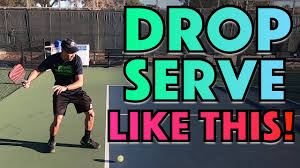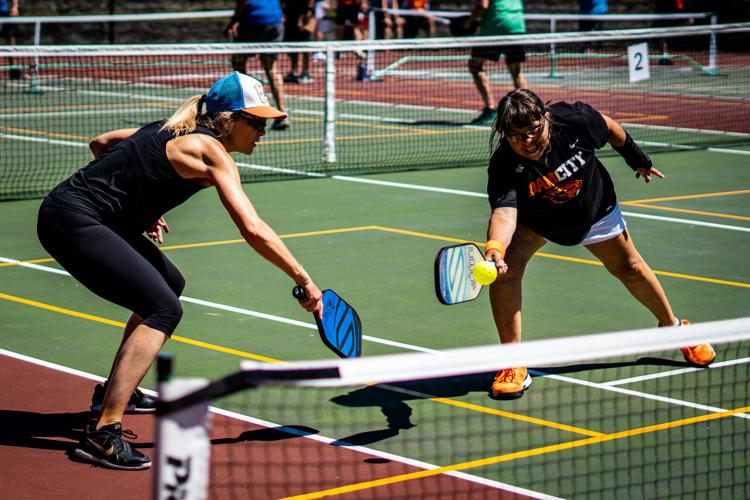
Pickleball is growing in popularity and people are eager to try it. Pickleball can be compared to other sports like badminton or tennis. It also has its own rules, as well as some significant differences. In this article, we'll take a look at the pickleball scoring system, which may seem a little confusing to new players.
Pickleball scoring does not depend on how well the serving side plays. The player who serves the ball must be positioned on the right side of the court. The ball will be returned to the opposing team if the serving player isn't on the right side. This gives the serving team an opportunity to score points before the other teams.
When the serving player is ready, the other member on the receiving team calls out two numbers. One for the server, one for receiver. During the rally, if a player on the receiving team asks a question, he or she should call out the answer. Also, the receiving team can call out the ball as MINE.

Once the serving team has the chance to serve, it must keep the ball in play for as long as possible. Faults, like hitting the ball out of bounds, can cost a player or team a rally. A common mistake is when a receiving player kicks the ball back into the kitchen. When a fault is called, it will automatically cost a player or team a point. A fault called prior to a second serve will result in no points.
If you are on the receiving end of pickleball, make sure that your position allows the ball to bounce. This can be done by standing horizontally at the non-volley line while facing your opponent.
After the serve has ended, the other team member announces what the score is. If there is a tie, the other team member announces the score. In this case, a player of each team gets a chance to win. Serving team should win because they are the best in position to win rally. Depending upon the type of serving shot taken, the other side can return it to centerline, kitchen or non-volley zones.
Pickleball scoring can be very easy but it can get complicated for new players. Players should adhere to the rules and keep their eyes on the ball. They should also learn how call out the score and to stop signal when necessary. Rally scoring is a popular option, but it is not recommended for beginners.

No matter what level of pickleball you are interested in, there are a few videos that will help you learn the basics. These videos include instructional videos and a look at pickleball players during rallies.
FAQ
Are there any exercises I shouldn't do?
Before you begin any new exercise regimen, make sure to check with your doctor. There are some people who have medical conditions or injuries that make it difficult to exercise. Some activities may require special equipment, or training. Swimming, for example, requires swimming suits and access to the pool.
Can I exercise after eating?
It all depends on the type of exercise that you are doing. After meals, avoid strenuous physical activity because it could cause stomach cramps. Instead, focus on light aerobic activities like brisk walking or biking.
What does Exercise do for your Body?
Exercising helps you lose weight, build muscle mass, increase energy levels, reduce stress, and improve sleep quality. You will experience improved moods and self-esteem as well as increased productivity and a lower risk of developing heart disease.
Can I eat during my exercise?
Yes. Yes. You should choose low-calorie snacks, such as watermelon (carrots, celery), apples, bananas and grapes. These foods contain nutrients that help you perform better during workouts.
Statistics
- An estimated 110,000 deaths per year could be prevented (cdc.gov)
- Adolescent girls were less active than adolescent boys, with 85% vs. 78% not meeting WHO recommendations of at least 60 minutes of moderate to vigorous intensity physical activity per day. (who.int)
- Globally, 81% of adolescents aged 11-17 years were insufficiently physically active in 2016. (who.int)
- In high-income countries, 26% of men and 35% of women were insufficiently physically active, as compared to 12% of men and 24% of women in low-income countries. (who.int)
External Links
How To
How To Burn Belly Fats Faster
Belly Fat is usually seen as a problem when we want to lose weight. But if you think about it, Belly Fat is actually a good thing. Your organs are protected from being damaged by excess belly fat. Let's look at how to rapidly lose belly fat.
Lack of exercise and stress are the main reasons we store body fat. Because of its stimulation of the production hormone cortisol, stress can make us feel hungry continuously. Cortisol increases insulin levels in our blood. The excess calories are stored as fat by insulin. Insufficient sleep can lead to an increase in appetite and adrenaline release. These extra calories can be broken down by exercising.
There are many options to reduce belly weight. Any one of these can be tried, depending on how much you have to spend. These tips will help you quickly get rid of belly fat.
-
Try to eat less food. Instead of eating three large meals a day, eat smaller meals. This will help you consume less calories.
-
Get plenty of water. Water flushes out toxins in your body and helps you stay hydrated. Drinking water before meals will help you feel fuller for longer, so you don't overeat.
-
Avoid eating unhealthy snacks. If you're looking for quick fixes, snack foods like chips, cookies, candies, etc. This might be tempting. Avoid these unhealthy treats. They are full of empty calories, too much sugar, and can be very fattening. Choose healthy alternatives like fruits and vegetables, nuts, seeds, whole grains, and seeds.
-
Strength training should be done at least three times per week. Strength training builds muscle mass and burns more calories when you're not working out. It strengthens bones muscles ligaments, tendons and the heart.
-
Stretching and walking are good habits. Stretching increases flexibility and mobility. It also reduces back pain. Walking is great for burning calories, especially brisk walking for 30 minutes.
-
Reduce alcohol intake. Your diet is empty of calories, and alcohol has no nutritional content.
-
Slowly lose weight. The first step towards losing weight is to identify what your current weight is. Add 5%-10% of your total bodyweight to calculate your ideal size. Once you have reached your target weight, begin decreasing your daily calories intake by 500-1 000 calories until you reach your goal.
-
Avoid processed foods. These foods have high amounts of salt, sugar, and preservatives. Even though they can be very convenient, these foods lack sufficient nutrients to support your health.
-
Don't skip breakfast! Consuming breakfast increases concentration, memory and energy levels. Breakfast should contain protein (like eggs), fibre (like oats), as well as complex carbohydrates (like oatmeal).
-
Have regular bowel movements. Constipation and irregularity cause bloating and gas. You can prevent this by drinking lots of water and increasing your fiber intake.